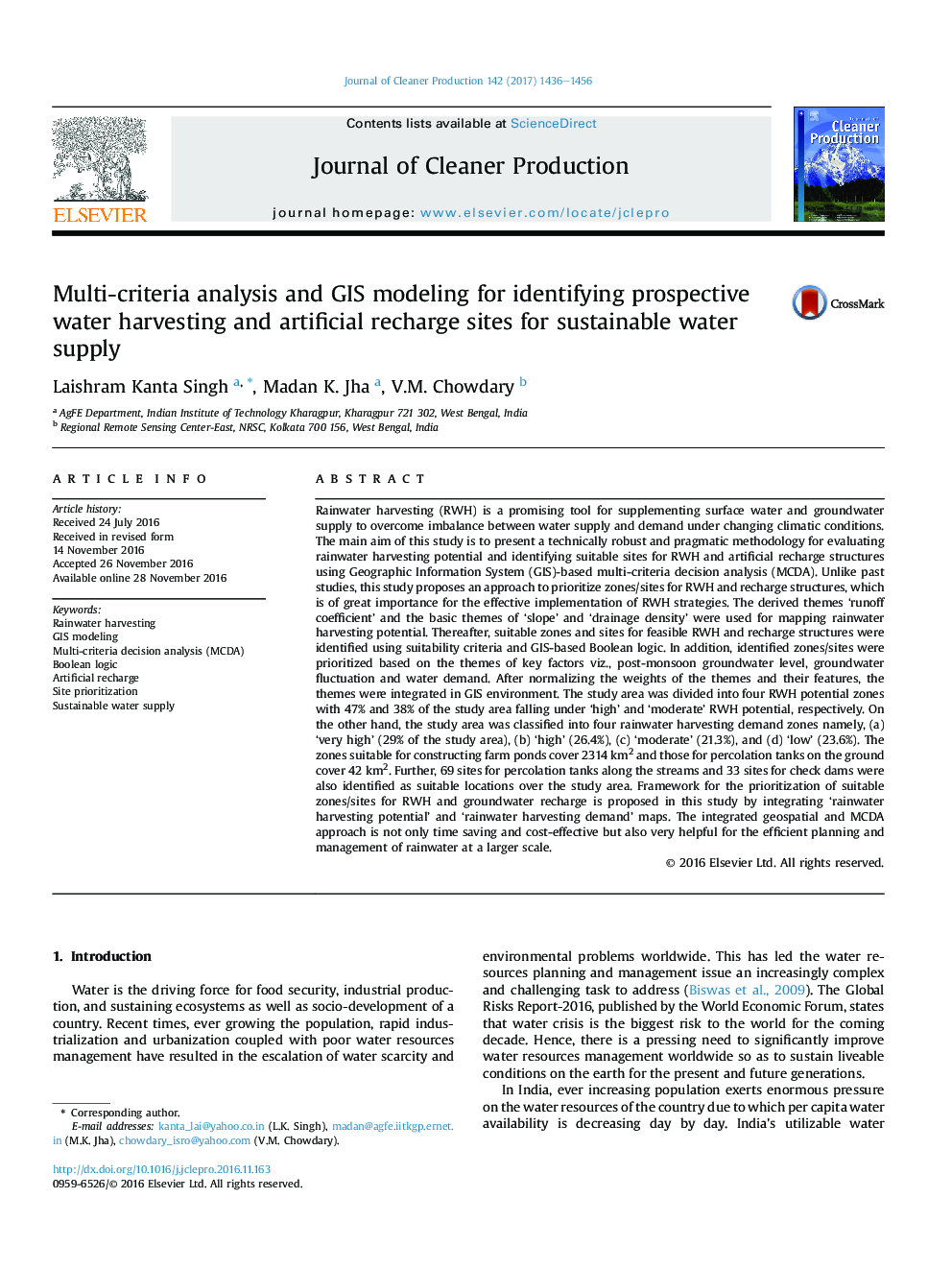| کد مقاله | کد نشریه | سال انتشار | مقاله انگلیسی | نسخه تمام متن |
|---|---|---|---|---|
| 5480324 | 1399315 | 2017 | 21 صفحه PDF | دانلود رایگان |
عنوان انگلیسی مقاله ISI
Multi-criteria analysis and GIS modeling for identifying prospective water harvesting and artificial recharge sites for sustainable water supply
دانلود مقاله + سفارش ترجمه
دانلود مقاله ISI انگلیسی
رایگان برای ایرانیان
کلمات کلیدی
موضوعات مرتبط
مهندسی و علوم پایه
مهندسی انرژی
انرژی های تجدید پذیر، توسعه پایدار و محیط زیست
پیش نمایش صفحه اول مقاله

چکیده انگلیسی
Rainwater harvesting (RWH) is a promising tool for supplementing surface water and groundwater supply to overcome imbalance between water supply and demand under changing climatic conditions. The main aim of this study is to present a technically robust and pragmatic methodology for evaluating rainwater harvesting potential and identifying suitable sites for RWH and artificial recharge structures using Geographic Information System (GIS)-based multi-criteria decision analysis (MCDA). Unlike past studies, this study proposes an approach to prioritize zones/sites for RWH and recharge structures, which is of great importance for the effective implementation of RWH strategies. The derived themes 'runoff coefficient' and the basic themes of 'slope' and 'drainage density' were used for mapping rainwater harvesting potential. Thereafter, suitable zones and sites for feasible RWH and recharge structures were identified using suitability criteria and GIS-based Boolean logic. In addition, identified zones/sites were prioritized based on the themes of key factors viz., post-monsoon groundwater level, groundwater fluctuation and water demand. After normalizing the weights of the themes and their features, the themes were integrated in GIS environment. The study area was divided into four RWH potential zones with 47% and 38% of the study area falling under 'high' and 'moderate' RWH potential, respectively. On the other hand, the study area was classified into four rainwater harvesting demand zones namely, (a) 'very high' (29% of the study area), (b) 'high' (26.4%), (c) 'moderate' (21.3%), and (d) 'low' (23.6%). The zones suitable for constructing farm ponds cover 2314Â km2 and those for percolation tanks on the ground cover 42Â km2. Further, 69 sites for percolation tanks along the streams and 33 sites for check dams were also identified as suitable locations over the study area. Framework for the prioritization of suitable zones/sites for RWH and groundwater recharge is proposed in this study by integrating 'rainwater harvesting potential' and 'rainwater harvesting demand' maps. The integrated geospatial and MCDA approach is not only time saving and cost-effective but also very helpful for the efficient planning and management of rainwater at a larger scale.
ناشر
Database: Elsevier - ScienceDirect (ساینس دایرکت)
Journal: Journal of Cleaner Production - Volume 142, Part 4, 20 January 2017, Pages 1436-1456
Journal: Journal of Cleaner Production - Volume 142, Part 4, 20 January 2017, Pages 1436-1456
نویسندگان
Laishram Kanta Singh, Madan K. Jha, V.M. Chowdary,